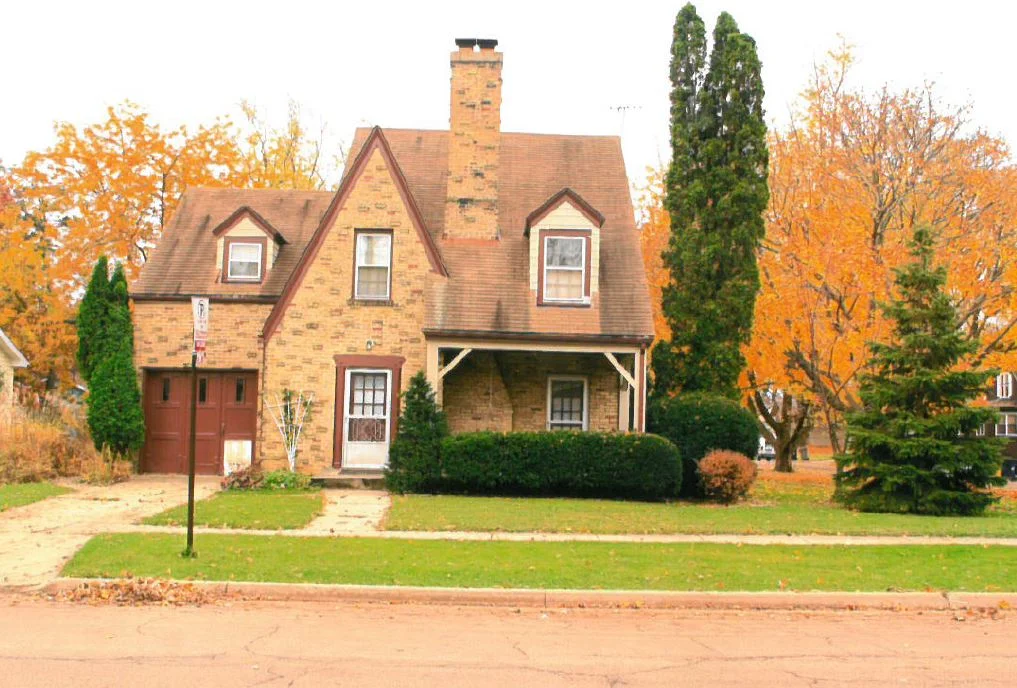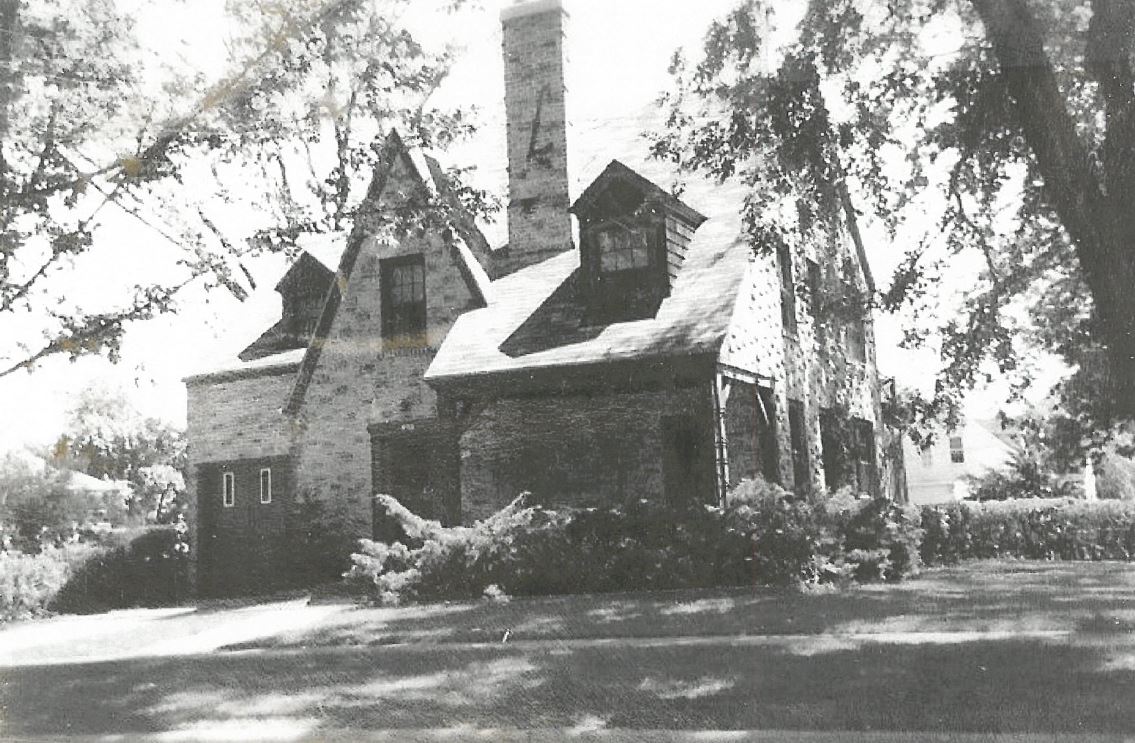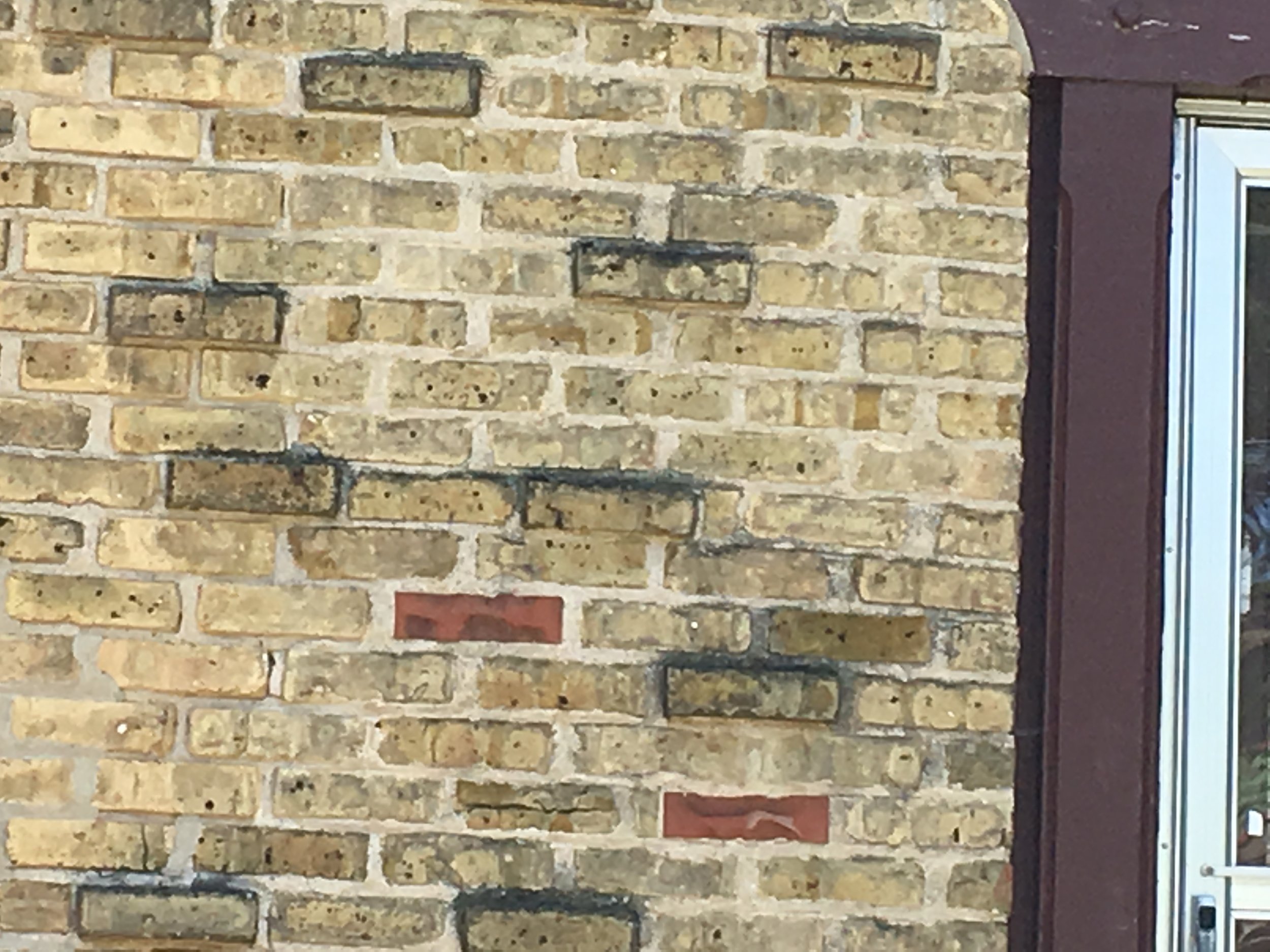623 ORANGE STREET
HISTORIC SIGNIFICANCE
623 Orange Street was built in 1926 for William E. and Anne Lossau. William and Anne purchased this lot from Arvilla Morey, the widow of Joseph Morey, who had been a well-digger and land speculator. Anne passed away shortly after moving into the home. William re-married and had his new wife, Frances, put on the title of the home in 1935. William and Frances lived in the home until 1975.
ARCHITECTURAL SIGNIFICANCE
623 Orange Street is an excellent example of the Tudor Revival style. The Tudor Revival style loosely draws its inspiration from late Medieval English homes. The earliest examples of this style in the United States date from the 1890s but did not become popular until the 1920s. Some characteristics of this style, that can be found on this home, is the steeply pitched roof, dominant - front facing gable, multi-paned, double-hung windows, gabled dormers and its ornate chimney. Another unique characteristic found on this home is the skintled brick. Skintled brick originated by Chicago Architects who saw the potential of using Common Brick as an artistic element. Common bricks were mainly used for their strength and fire resistance and were not deemed high quality because of their variation in color. This type of brick was later used for its artistic value by setting them roughly at different angles, projecting and recessing them beyond the wall line. This construction type gives the home more of a rustic, vernacular look.
TIMELINE OF PREVIOUS OWNERS
Sources: 2010 Heritage Plaque Application; Audio: TextAloud





